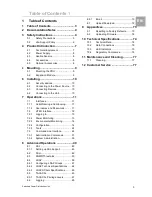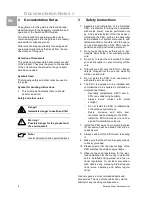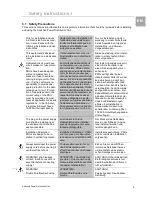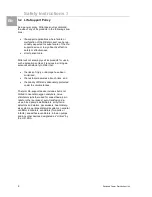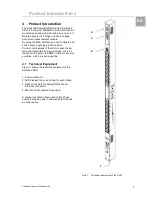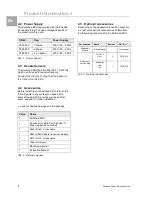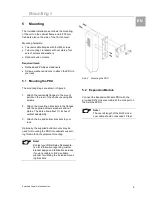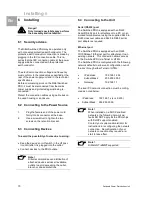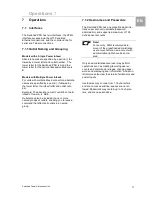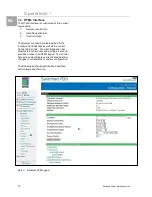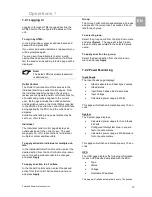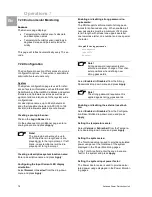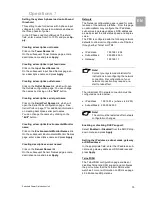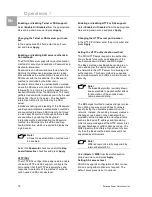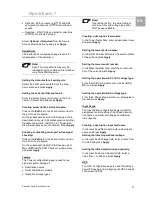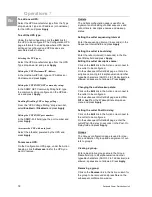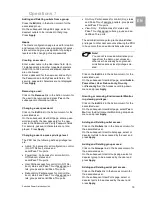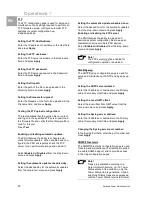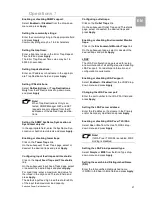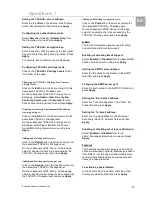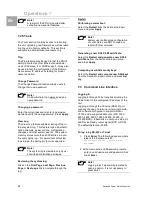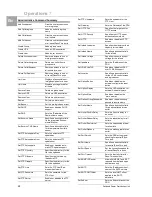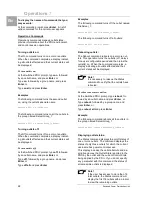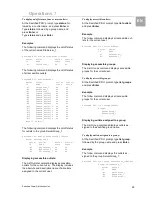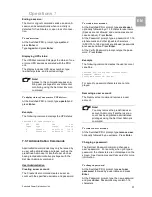
Operations 7
16
Switched Power Distribution Unit
EN
Enabling or disabling Telnet or SSH support:
Select Enabled or Disabled from the appropriate
Server drop-down menu and press Apply.
Changing the Telnet or SSH server port num-
ber:
In the appropriate Port field, enter the port num-
ber and press Apply.
Enabling or disabling SSH server authentica-
tion methods:
The PDU SSH server supports two authentication
methods for security and validation: Password and
Keyboard-Interactive.
Password is an authentication method where the
SSH client gathers username/password creden-
tials and makes the authentication request to the
SSH sever with the credentials. The Password
method is controlled by the SSH client.
Keyboard-Interactive is an authentication method
where the SSH server controls an information field
followed by one or more prompts requesting cre-
dential information from the SSH client. The client
gathers credential information keyed-in by the user
and sends it back to the server. The Keyboard-
Interactive method is controlled by the SSH
server.
Individual enabling and disabling of the Password
and Keyboard-Interactive authentication methods
are supported to allow an SSH client to be forced
to use a specific method. Although both methods
are available, by enabling the Keyboard-
Interactive method and disabling the Password
method, the SSH client is forced to used Key-
board-Interactive, which is required to display the
login banner.
Note!
At least one authentication method must
be enabled.
Select the Password checkbox and/or the Key-
board-Interactive checkbox and press Apply.
HTTP/SSL
The HTTP/SSL configuration page used to enable
or disable HTTP and SSL support, configure the
port number that the HTTP server watches and
responds to, selection of the method of authenti-
cation used and SSL access level.
Enabling or disabling HTTP or SSL support:
Select Enabled or Disabled from the appropriate
Server drop-down menu and press Apply.
Changing the HTTP server port number:
In the HTTP Port field, enter the port number and
press Apply.
Setting the HTTP authentication method:
The PDU HTTP server supports two authentica-
tion methods for security and validation of the
username-password: Basic and MD5 digest.
The Basic method uses Base64 encoding to en-
code and deliver the username-password over
the network to the HTTP server for decoding and
authentication. This basic method is supported
by all web browsers and offers a minimum level of
security.
Note!
The Base64 algorithm is widely known
and susceptible to packet-sniffer attack
for acquisition of the encoded user-
name-password string.
The MD5 digest method provides stronger protec-
tion utilizing one-way encoded hash numbers,
never placing the username-password on the
network. Instead, the sending browser creates a
challenge code based on the hash algorithm,
provided username-password and unique items
such as the device IP address and timestamp,
which is compared against the HTTP server inter-
nal user database of valid challenge codes. The
MD5 digest method offers a higher level of secu-
rity than the Basic method but at present is not
supported by all browsers.
Note!
MD5 is known to be fully supported by
Internet Explorer 5.0+
Select Basic or MD5 from the Authentication
drop-down menu and press Apply.
Setting SSL access level:
PDU SSL supports configuration of SSL connec-
tions as being either optional or required. The
default access level is set to optional.


